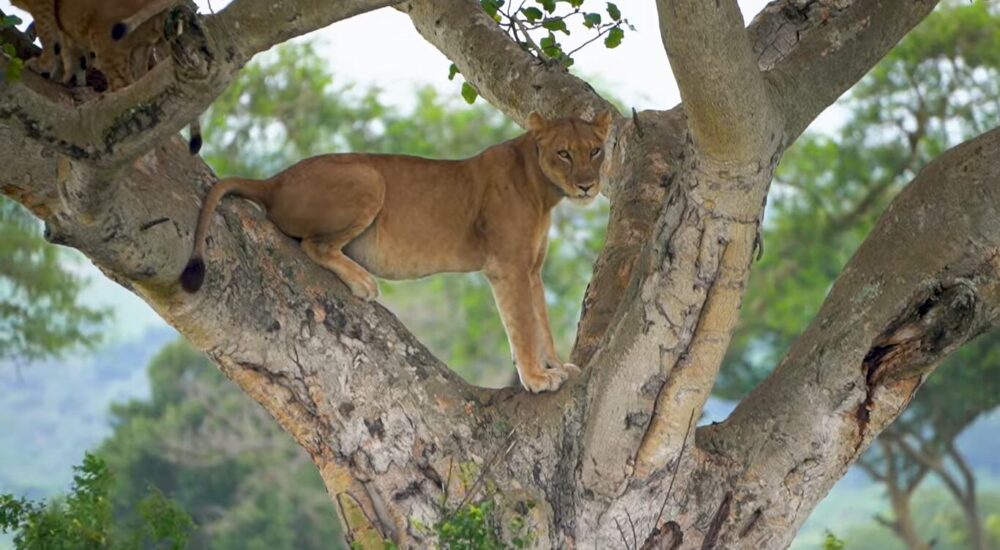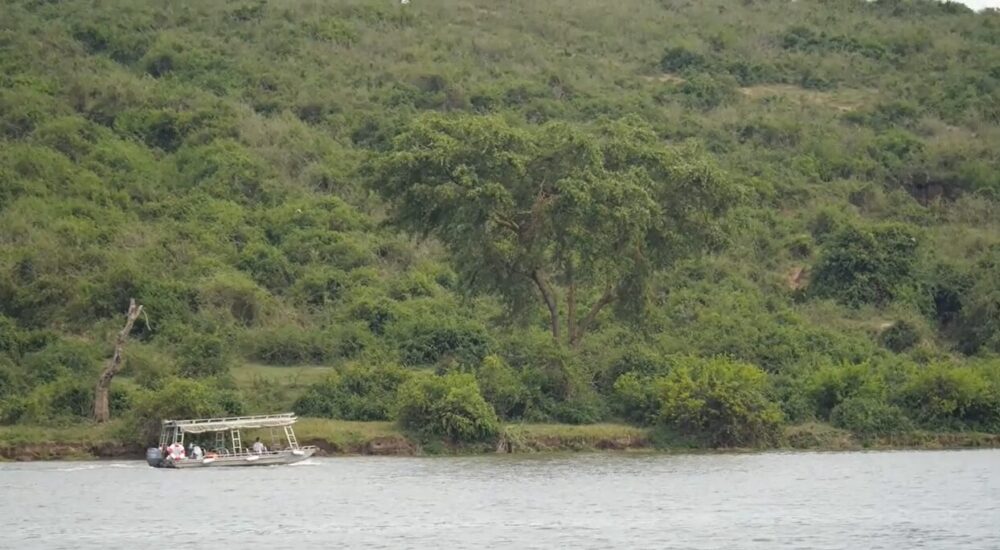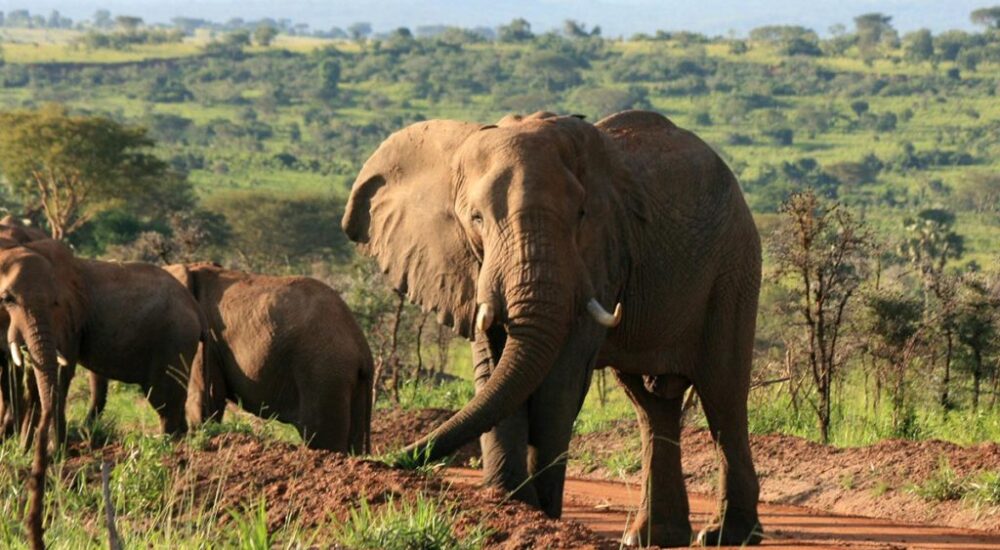Tree-climbing lions are one of the most extraordinary wildlife spectacles in Africa. Found in only…
Vegetations of Rwenzori Mountains
Vegetations of Rwenzori Mountains – Discover the Vegetation and Adventures of the Rwenzori Mountains
The Rwenzori Mountains, located in Uganda, are among the most unique and fascinating destinations in the country and on the African continent. These snow-capped peaks offer a remarkable range of vegetation types that change with altitude as you move through the various zones of the Rwenzori.
The vegetation ranges from tropical rainforest to alpine meadows and snowy peaks. The mountain range is home to endemic plant species like the giant groundsel and giant lobelia, along with six-meter-high moss-covered heathers. Most of the Rwenzori range is a UNESCO World Heritage Site, protected by Rwenzori Mountains National Park in Uganda and Virunga National Park in the Democratic Republic of the Congo.
This dramatic mountain range features glaciers, waterfalls, lakes, and unusual plant life. Its natural beauty and ecological diversity make it one of Africa’s most stunning alpine environments. The park also provides habitats for endangered species and hosts a wide variety of rare flora and fauna, such as the enormous heather plant.
Vegetation Zones of the Rwenzori Mountains
The Rwenzori Mountains have five distinct vegetation zones influenced by altitude:
Grassland Zone (1,000–2,000 m)
Montane Forest (2,000–3,000 m)
Bamboo Zone (2,500–3,000 m)
Heather Zone (3,000–4,000 m)
Afro-Alpine Moorland (4,000–4,500 m)
In the higher elevations, the vegetation includes unique afro-alpine species such as the giant lobelia and groundsels. The montane forests are rich with plant life, including evergreen bamboo, Rwenzori blackberry, and Rubus dogetti. As elevation increases, the vegetation becomes more specialized, adapted to cold, wet conditions with insulation mechanisms that help plants maintain water balance despite nocturnal frost and rapid daytime temperature changes.
Despite the abundance of rainfall, afro-alpine plants behave like desert plants due to the challenges of absorbing water in cold environments. Their thick leaves and insulating structures allow them to survive in these extreme conditions.
Rwenzori Mountains National Park Overview
Rwenzori Mountains National Park spans 996 square kilometers and protects the slopes of the mountain range along the Uganda–DR Congo border. The six prominent peaks include Mount Stanley, Mount Speke, Mount Emin Pasha, Mount Gessi, Mount Luigi da Savoia, and Mount Baker. Mount Stanley, with its highest point—Margherita Peak (5,109 meters)—is the tallest non-volcanic peak in Africa.
Established as a protected area in 1941, the park was designated a UNESCO World Heritage Site in 1994. It is home to over 70 mammal species and 217 bird species, including 19 that are Albertine Rift endemics. The park offers an unforgettable trekking experience, best suited for physically fit individuals prepared for challenging climbs.
Activities in Rwenzori Mountains National Park
Mountain Climbing and Hiking
Mountain climbing is one of the most thrilling experiences in the Rwenzori Mountains. Hikers can choose between two main routes:
The Central Circuit Trail: Starting from the Mubuku River, this trail leads up a glacial ridge to Nyabitaba Hut and onward to Margherita Peak. The trek typically takes seven days.
The Kilembe Trail: Beginning near Kasese town, this trail passes through the Nyamwamba Valley and glacial lakes before merging with the main circuit at Lake Kitandara. It offers views of the highest peaks and diverse flora and fauna.
All hiking gear is provided by Rwenzori Mountaineering Services. It is recommended that climbers be in good health and physical condition.
Bird Watching
The park is an excellent birding destination, especially in the montane forests and high-altitude zones. Over 217 bird species have been recorded here, including:
Rwenzori Turaco
Long-eared Owl
Archers’ Robin-chat
Cinnamon-chested Bee-eater
Blue-headed Sunbird
Collared Apalis
Bearded Vulture
Dusky and Shelley’s Crimson Wings
Bird watchers may also see bee-eaters, sunbirds, flycatchers, warblers, and greenbuls throughout the park.
Cultural Tours and Community Visits
Visitors can experience the cultural heritage of communities living at the base of the Rwenzori Mountains. Several tribes inhabit this area, including the Bakonzo, Bamba, Babwiisi, Vanoma, Basongora, and Banyabindi.
Ruboni Community Tour
“Ruboni,” meaning “clear water” in the local Rukonzo language, offers an authentic cultural experience. Visitors can walk through the community, meet blacksmiths, traditional healers, basket weavers, and enjoy a traditional dance performance. The tour also includes a guided nature walk along the Mubuku River with chances to spot Rwenzori Turacos, sunbirds, chameleons, and monkeys.
Mihunga Community Tour
Located high in the mountains, the Mihunga village is home to the Bakonzo tribe, who have lived here for centuries without modern infrastructure. Tours include herbal medicine demonstrations, craft showcases, school visits, and cultural dances. A forest trek offers birdwatching opportunities and possible sightings of colobus monkeys.
Best Time to Visit the Rwenzori Mountains
The best time to visit is during the drier months from June to September. While the mountains are located near the equator and receive high rainfall, especially on the eastern slopes, these months offer more favorable hiking conditions.
Accommodation in the Rwenzori Mountains
Several lodging options are available around the park:
Hotel Margherita – Near Kasese town and close to the mountain base
Rwenzori International Hotel
Equator Snow Lodge
Kitara Lodge
Tropical Savanna Guesthouse
These facilities provide accommodation and access to mountain trekking services.
Getting to Rwenzori Mountains National Park
The park can be accessed by road from Kampala to Kasese, a journey of approximately 5 hours. Travelers can hire a private vehicle or use public transportation, though a 4×4 vehicle is recommended for comfort. Another option is to fly from Kajjansi Airstrip near Kampala to Kasese Airstrip.
For guided treks, cultural tours, and safari packages to the Rwenzori Mountains, reach out to Monumental Expeditions and Safaris, your trusted partner in exploring Uganda’s hidden gems.


